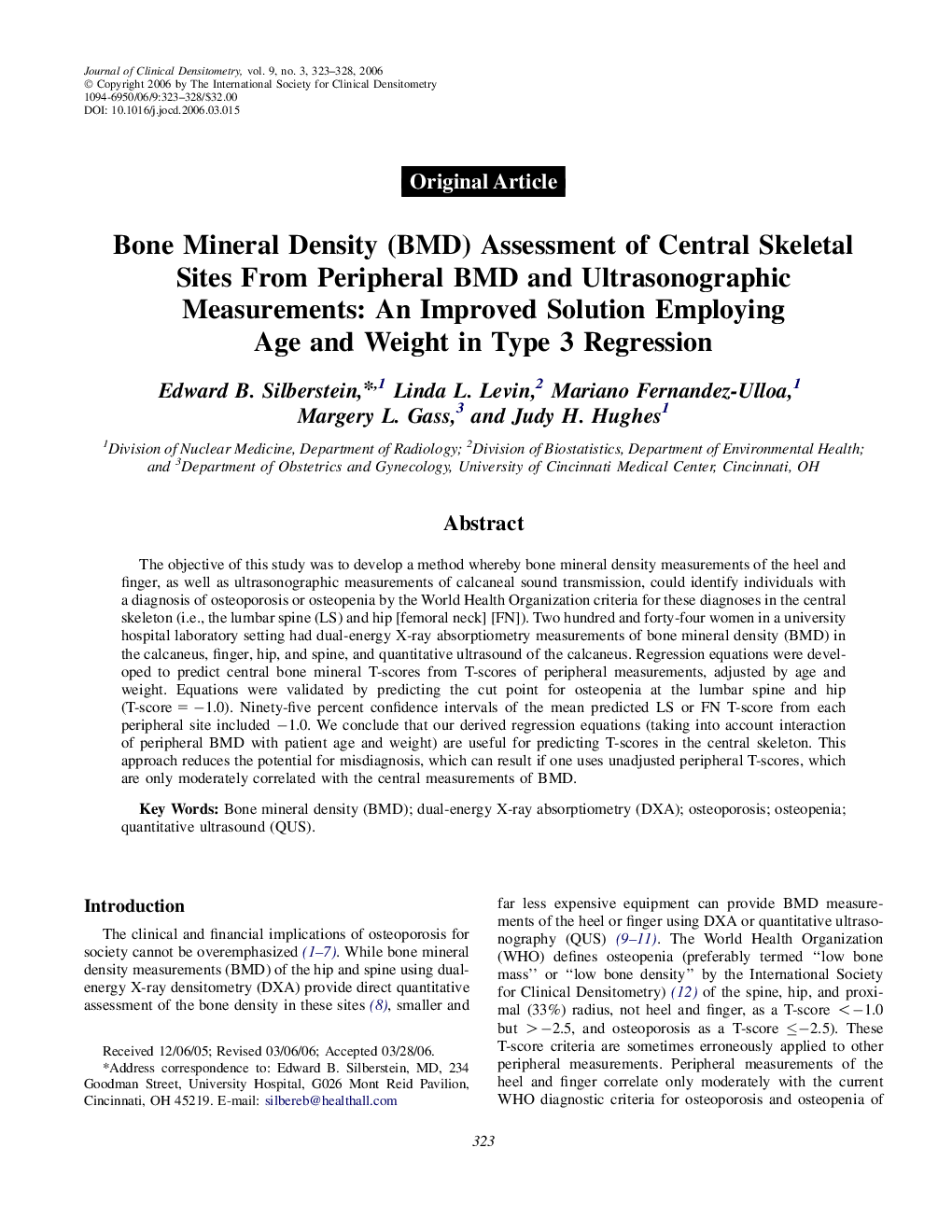| Article ID | Journal | Published Year | Pages | File Type |
|---|---|---|---|---|
| 3271831 | Journal of Clinical Densitometry | 2006 | 6 Pages |
Abstract
The objective of this study was to develop a method whereby bone mineral density measurements of the heel and finger, as well as ultrasonographic measurements of calcaneal sound transmission, could identify individuals with a diagnosis of osteoporosis or osteopenia by the World Health Organization criteria for these diagnoses in the central skeleton (i.e., the lumbar spine (LS) and hip [femoral neck] [FN]). Two hundred and forty-four women in a university hospital laboratory setting had dual-energy X-ray absorptiometry measurements of bone mineral density (BMD) in the calcaneus, finger, hip, and spine, and quantitative ultrasound of the calcaneus. Regression equations were developed to predict central bone mineral T-scores from T-scores of peripheral measurements, adjusted by age and weight. Equations were validated by predicting the cut point for osteopenia at the lumbar spine and hip (T-score = â 1.0). Ninety-five percent confidence intervals of the mean predicted LS or FN T-score from each peripheral site included â 1.0. We conclude that our derived regression equations (taking into account interaction of peripheral BMD with patient age and weight) are useful for predicting T-scores in the central skeleton. This approach reduces the potential for misdiagnosis, which can result if one uses unadjusted peripheral T-scores, which are only moderately correlated with the central measurements of BMD.
Keywords
Related Topics
Health Sciences
Medicine and Dentistry
Endocrinology, Diabetes and Metabolism
Authors
Edward B. Silberstein, Linda L. Levin, Mariano Fernandez-Ulloa, Margery L. Gass, Judy H. Hughes,
